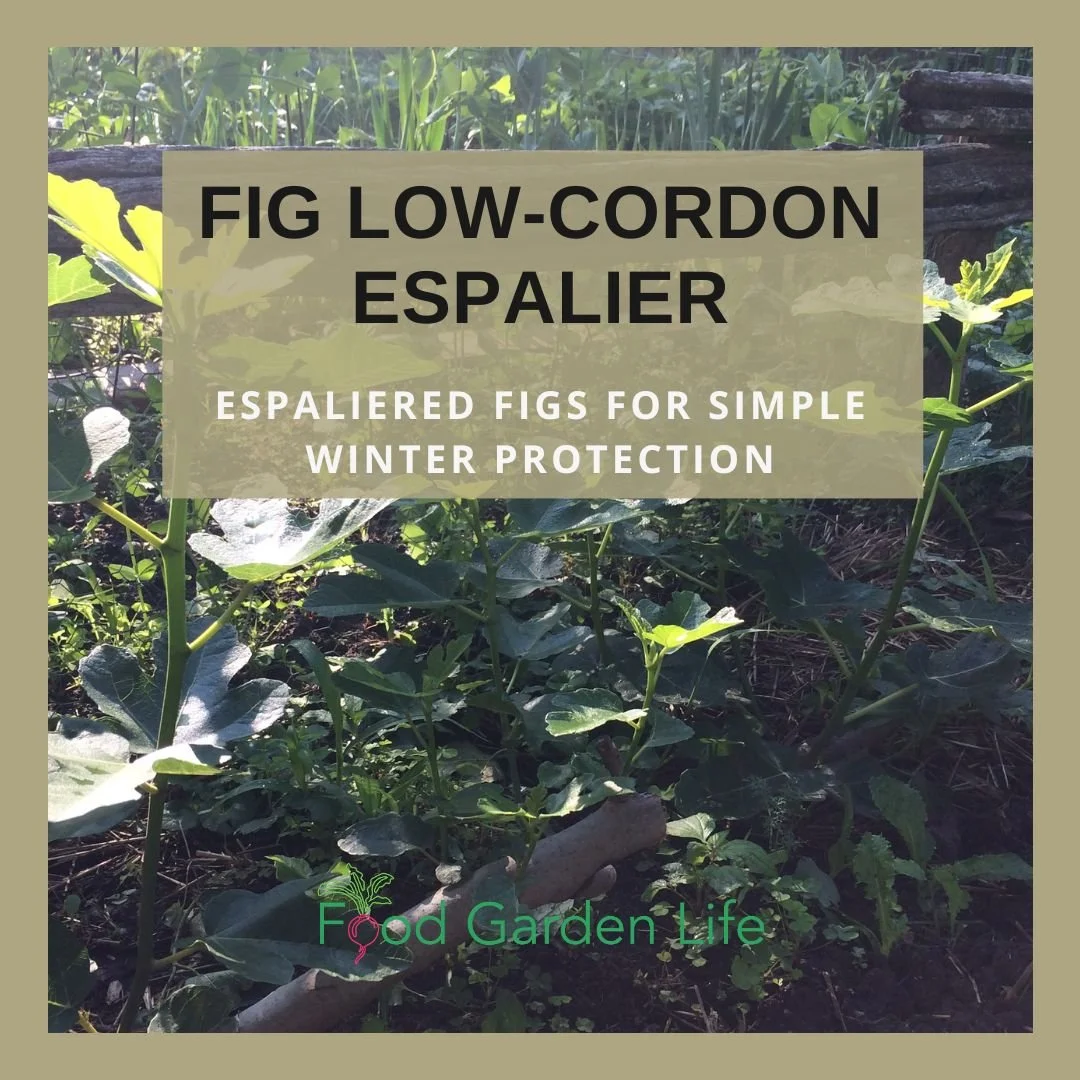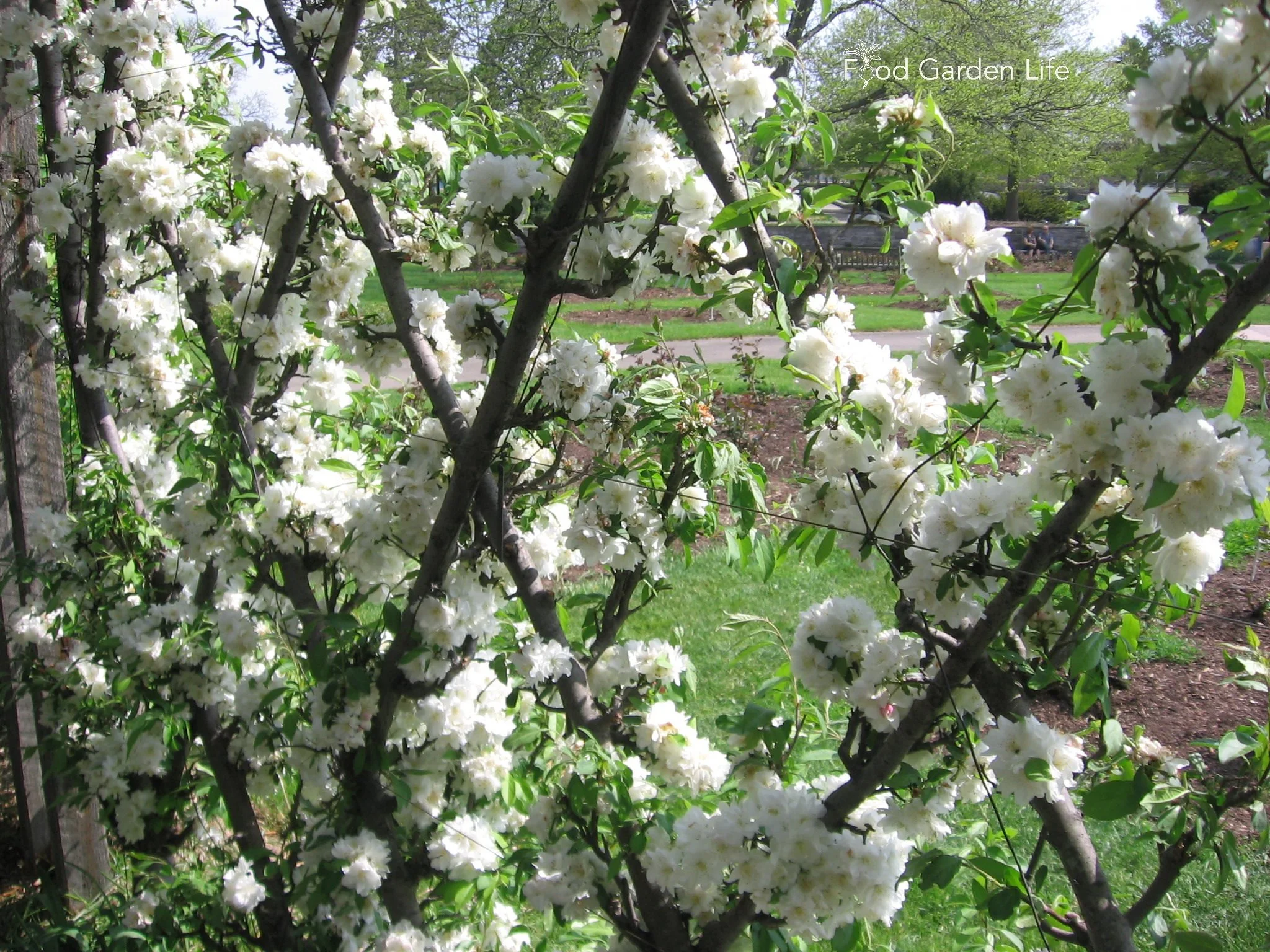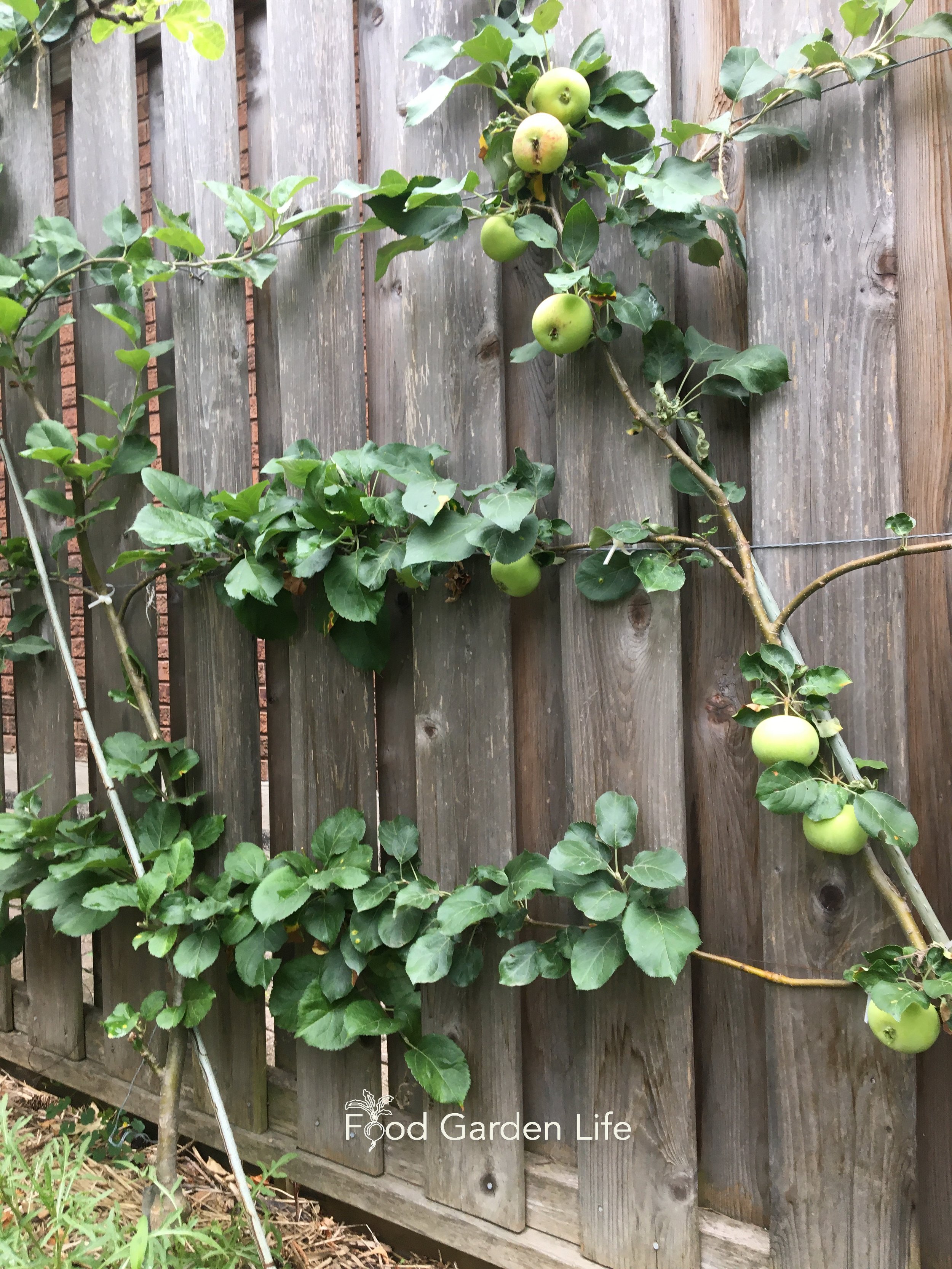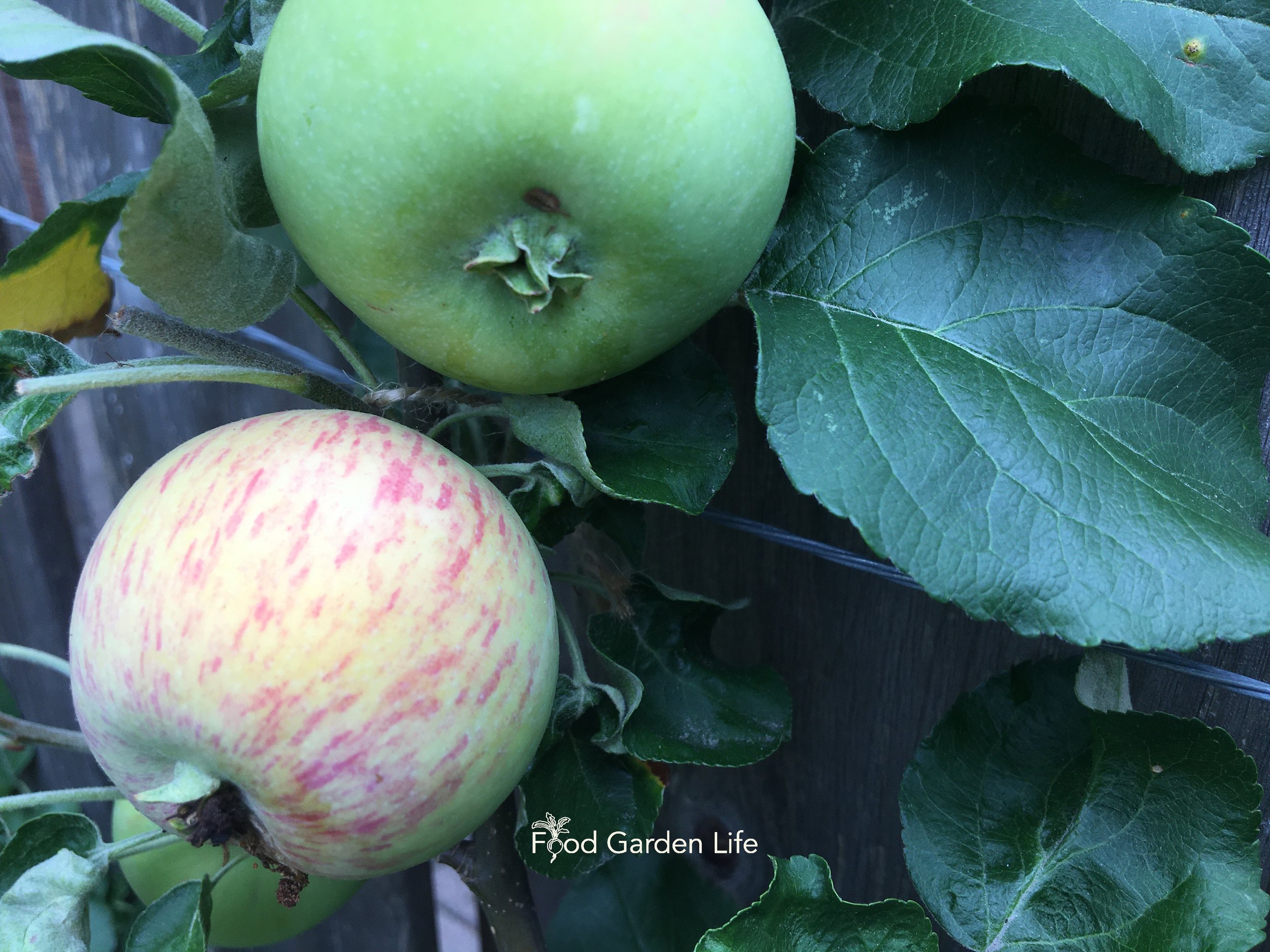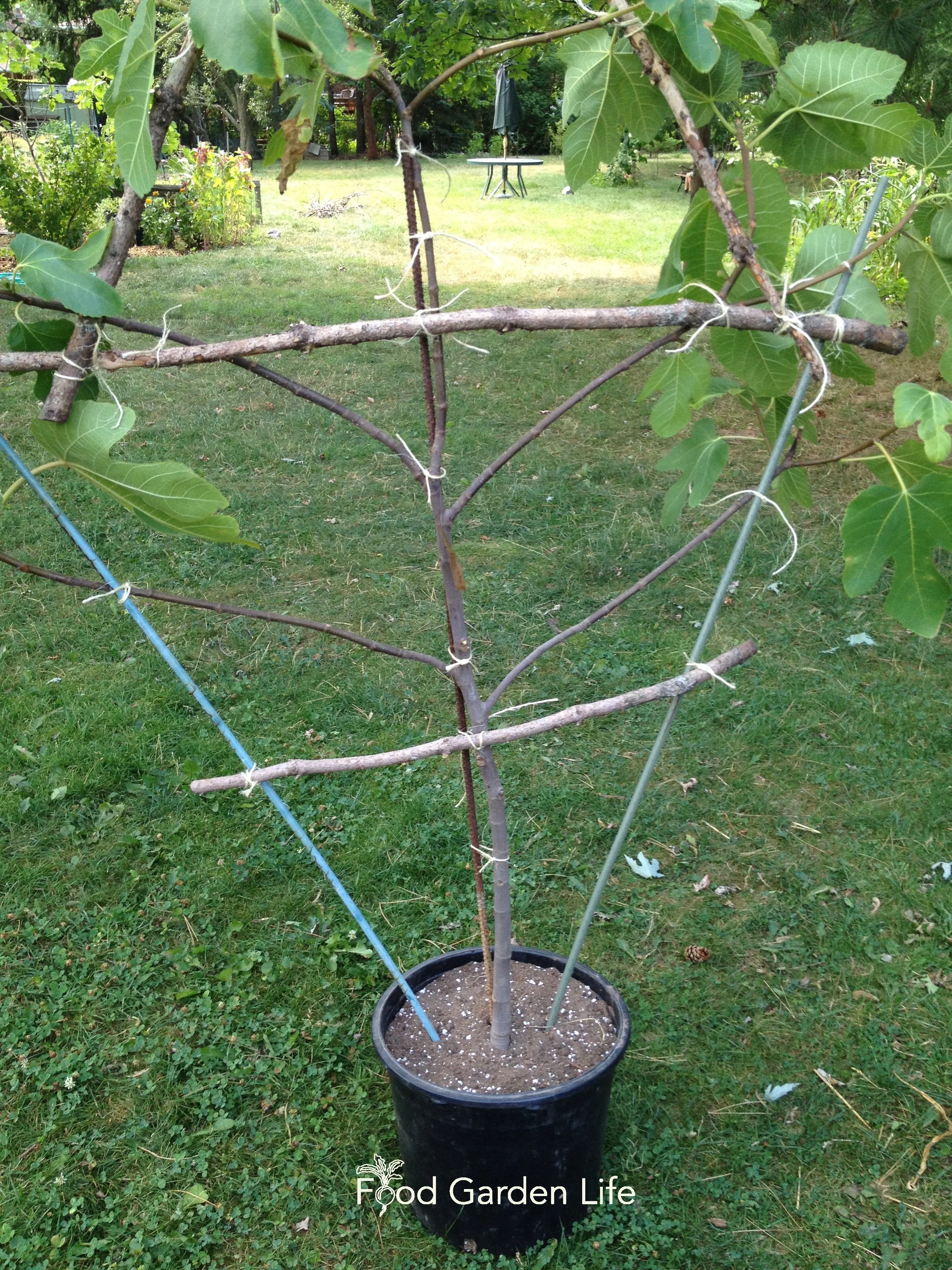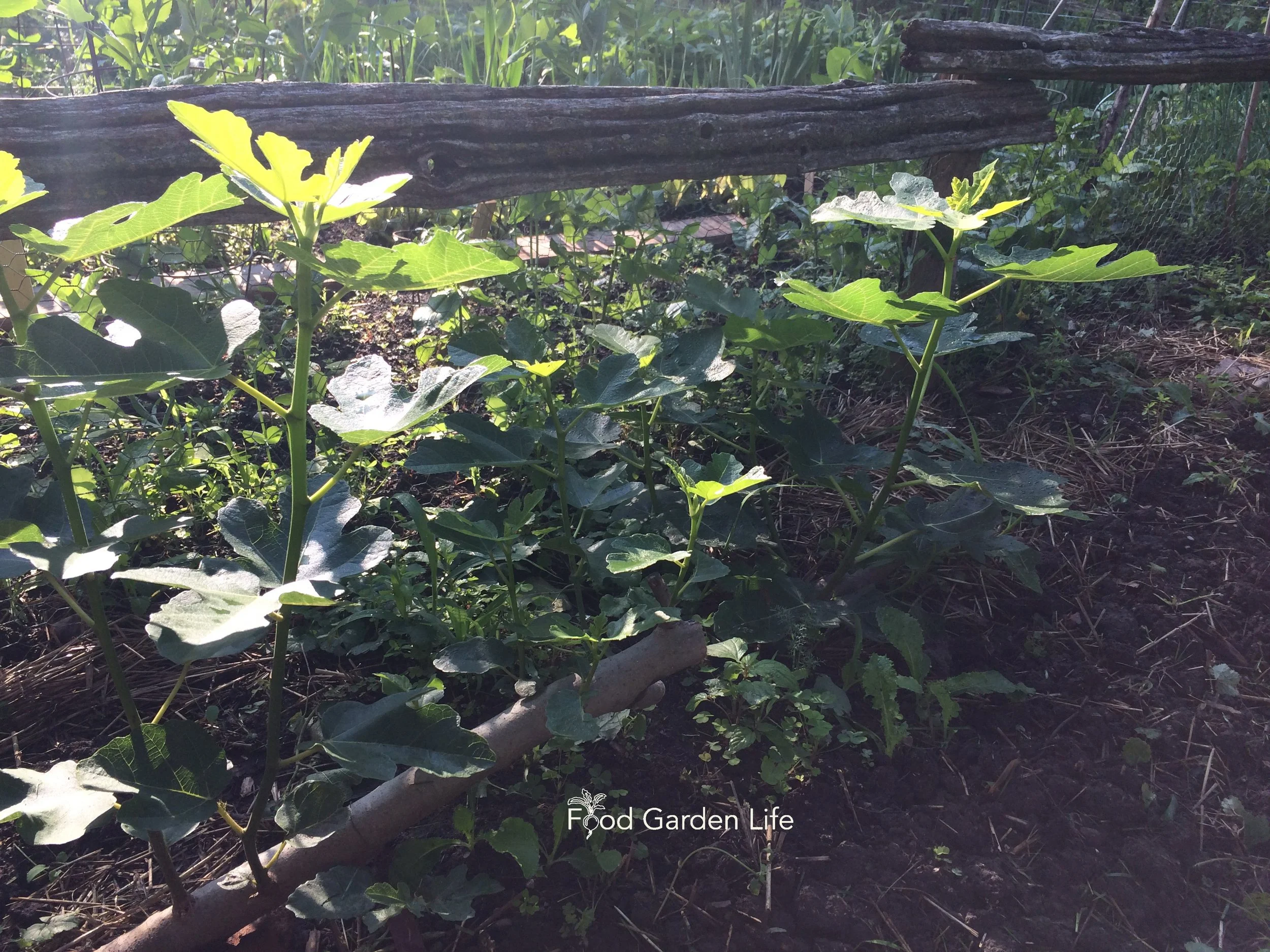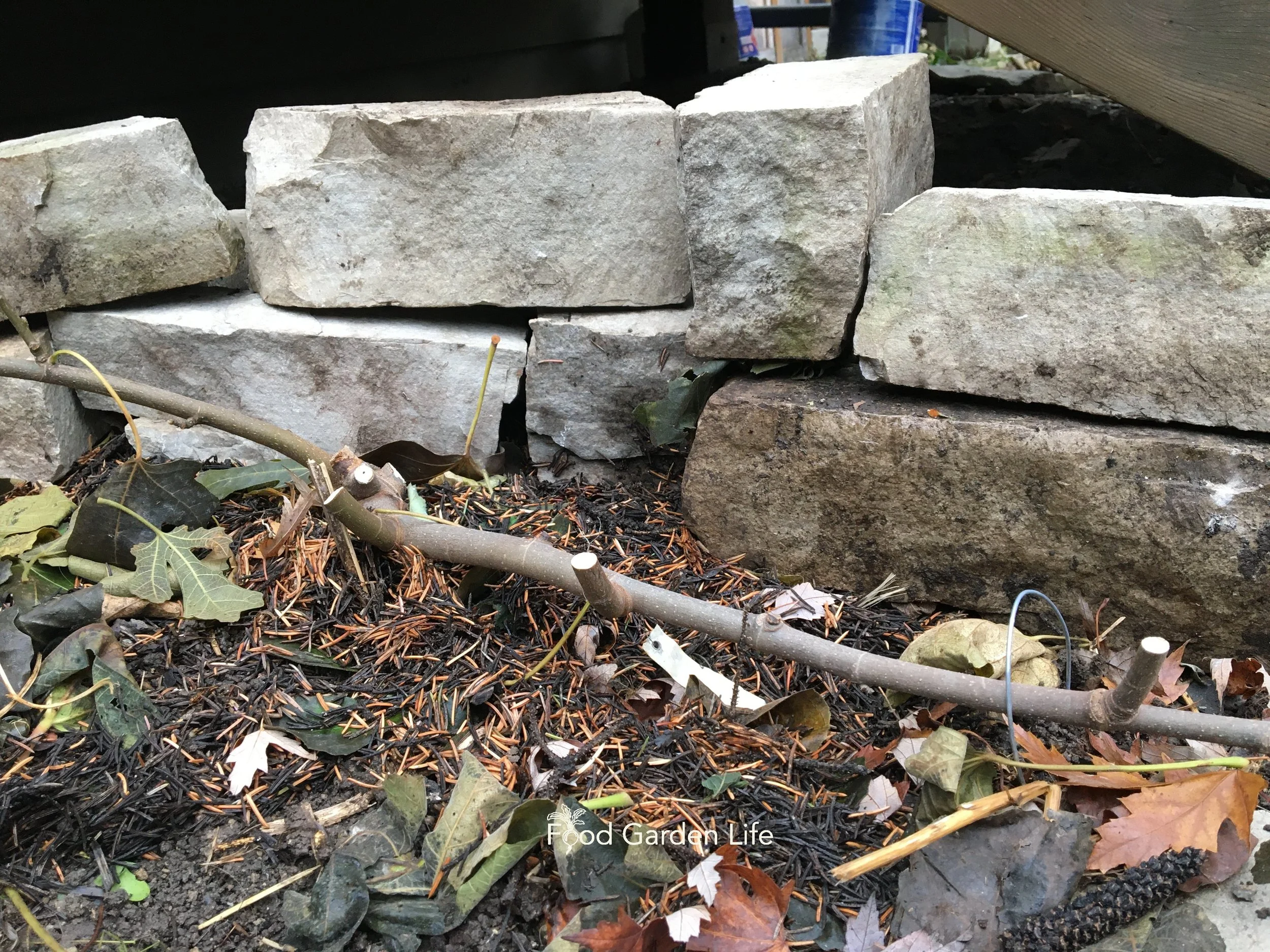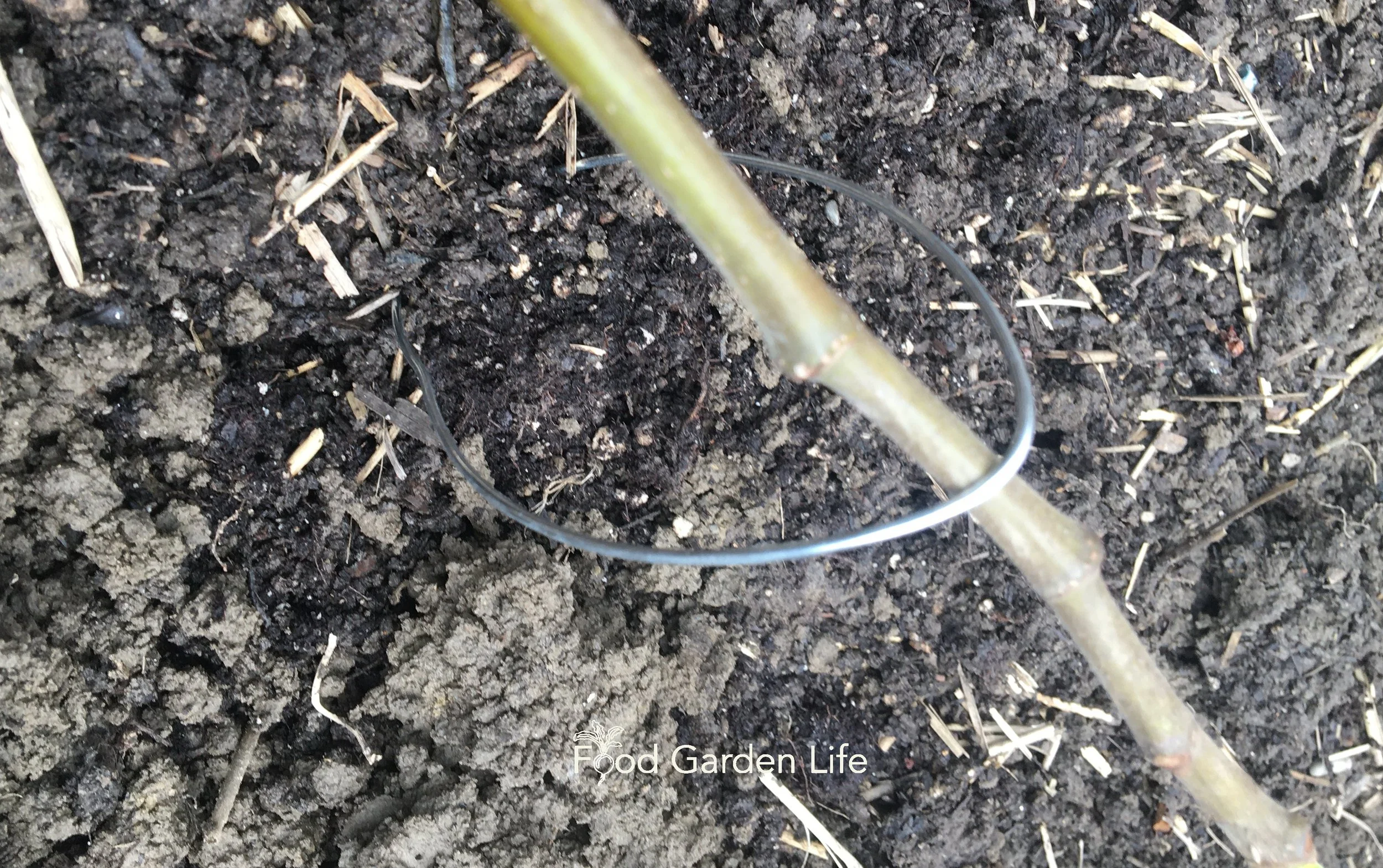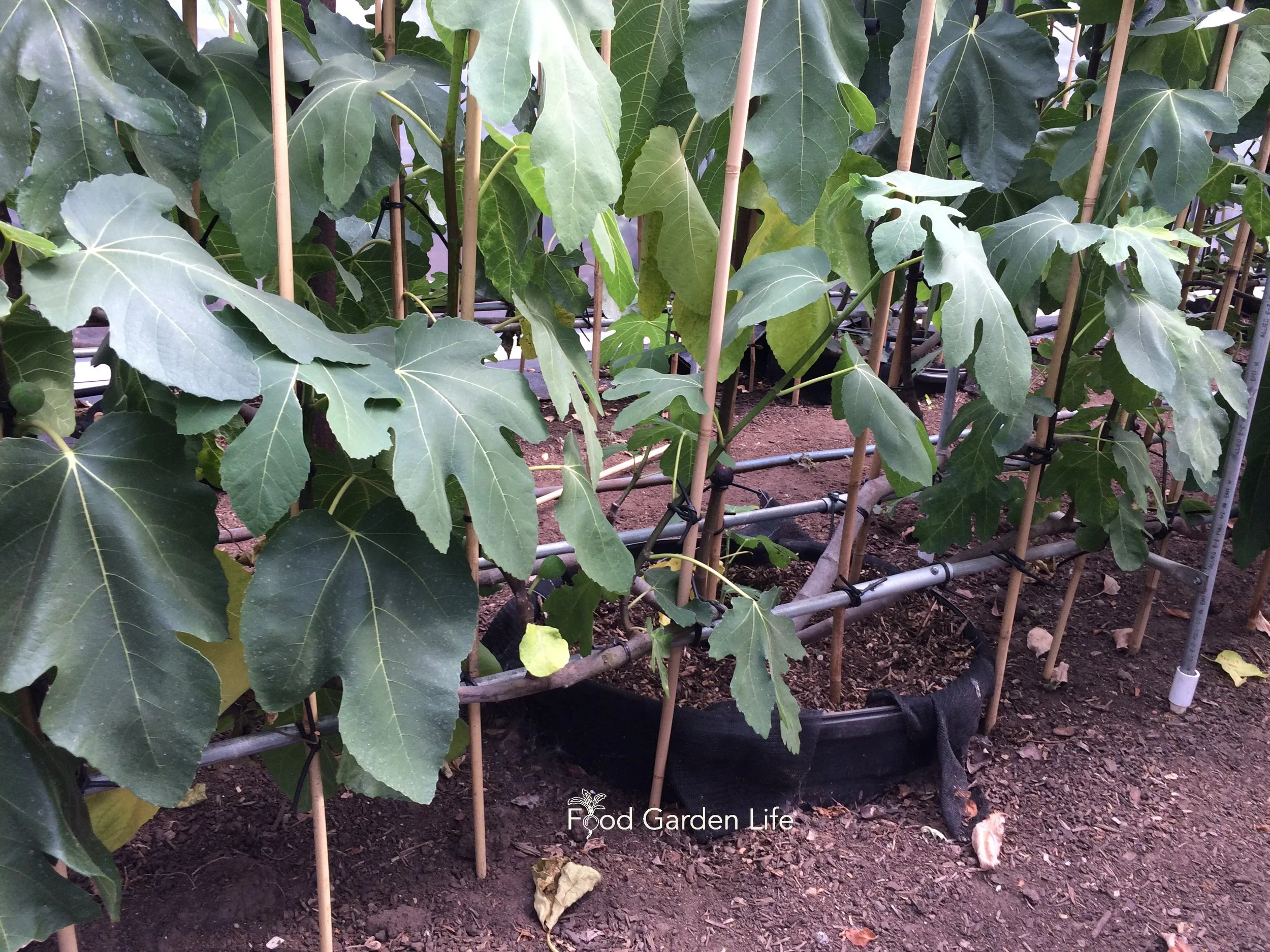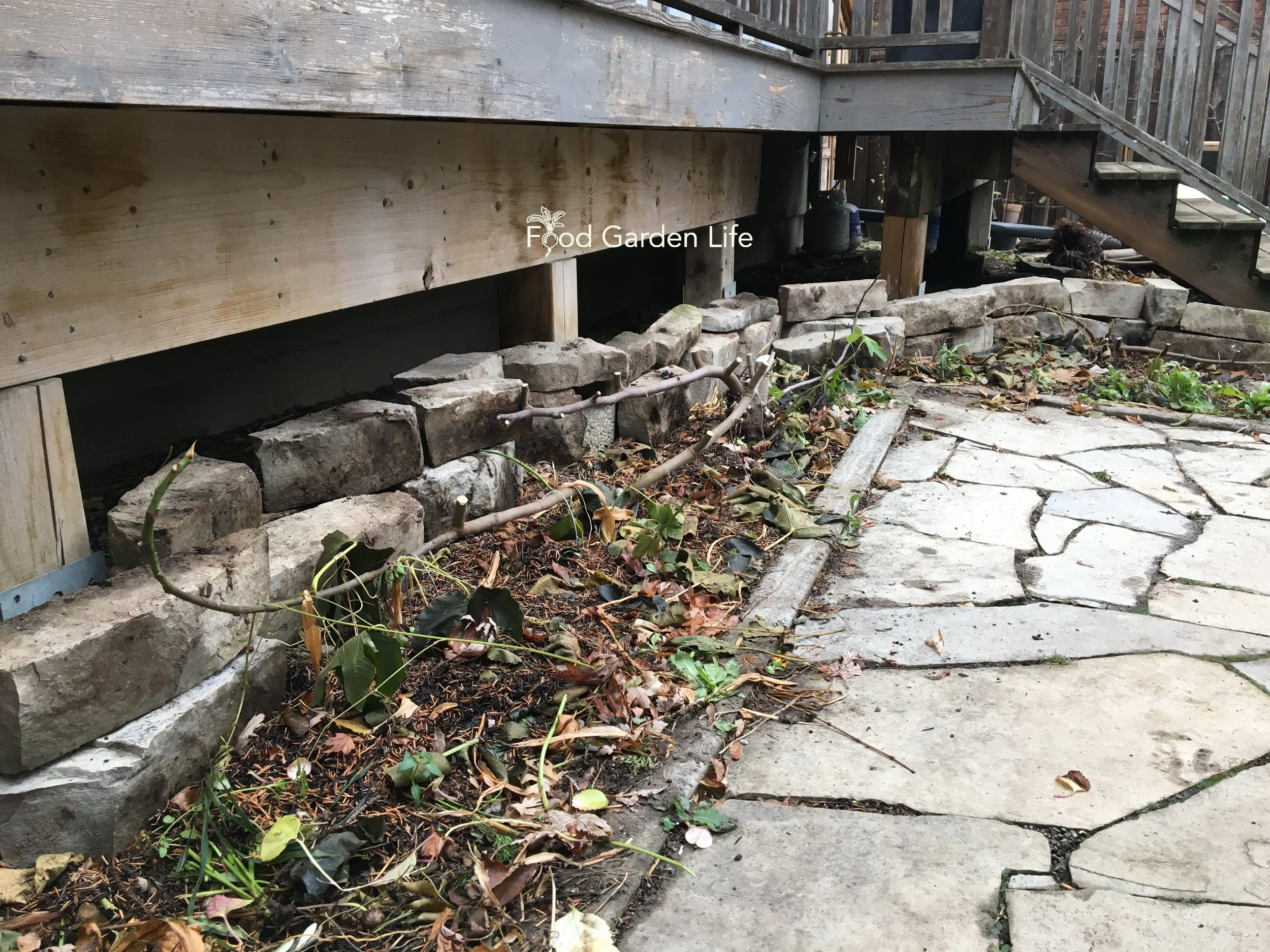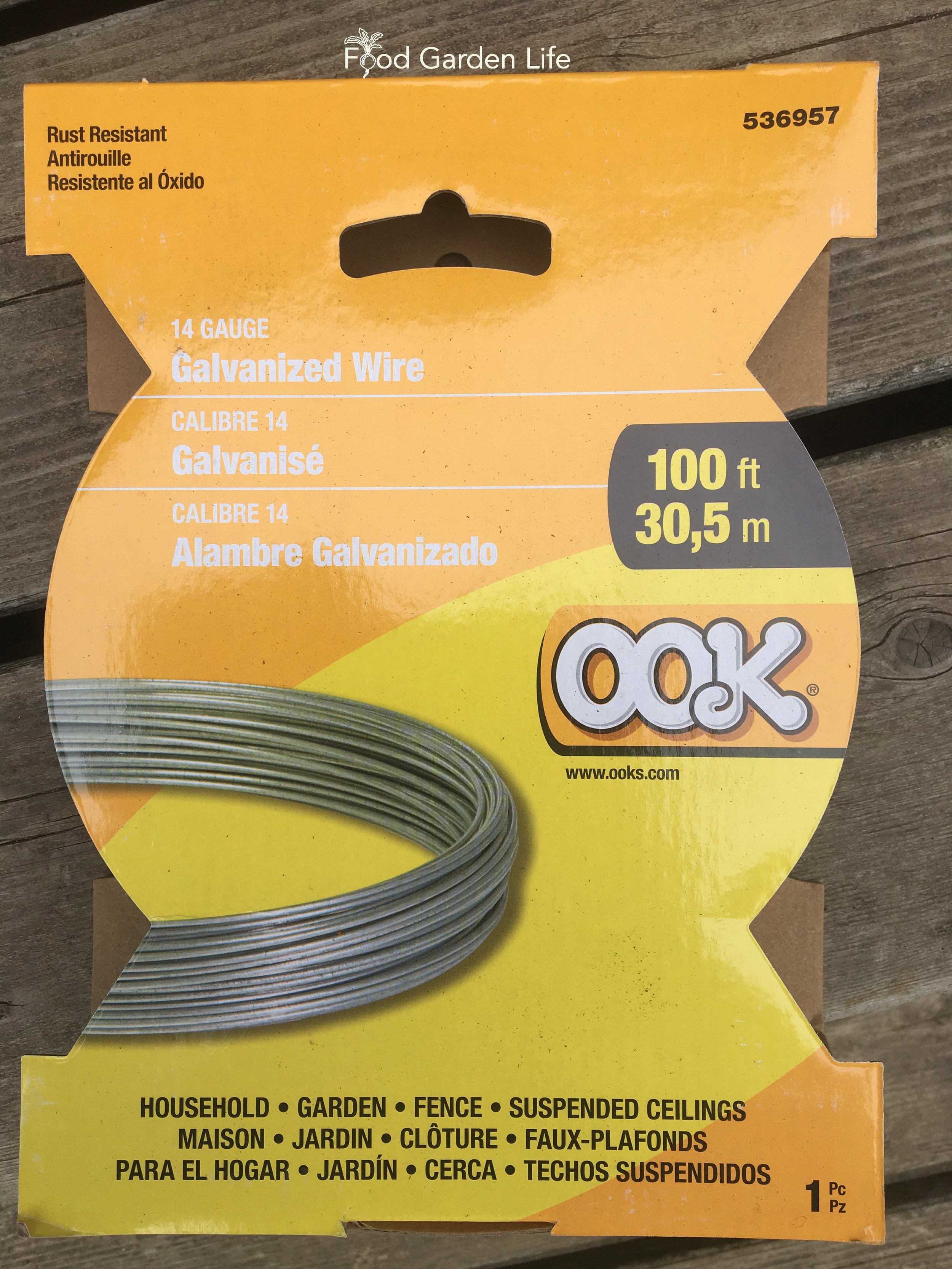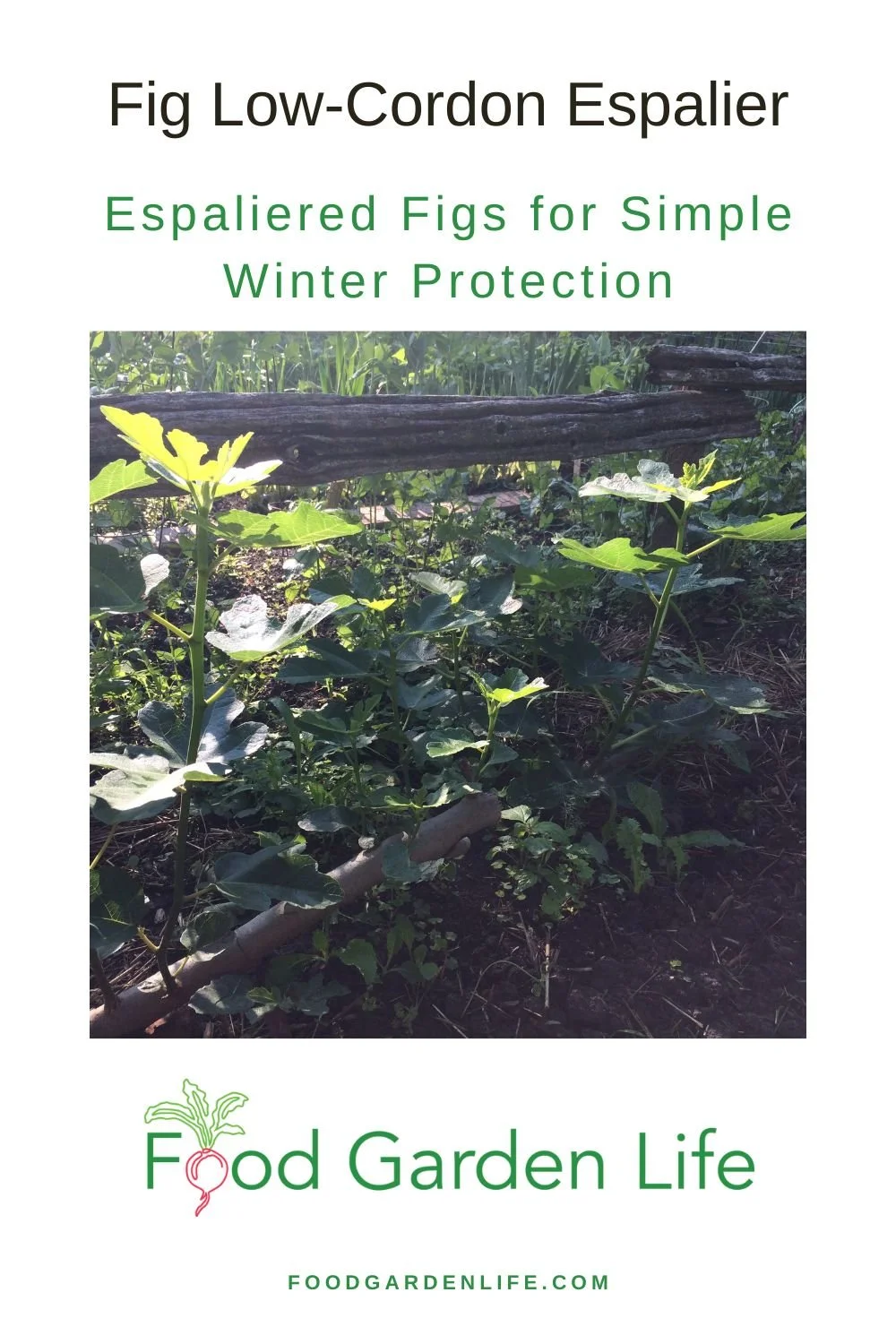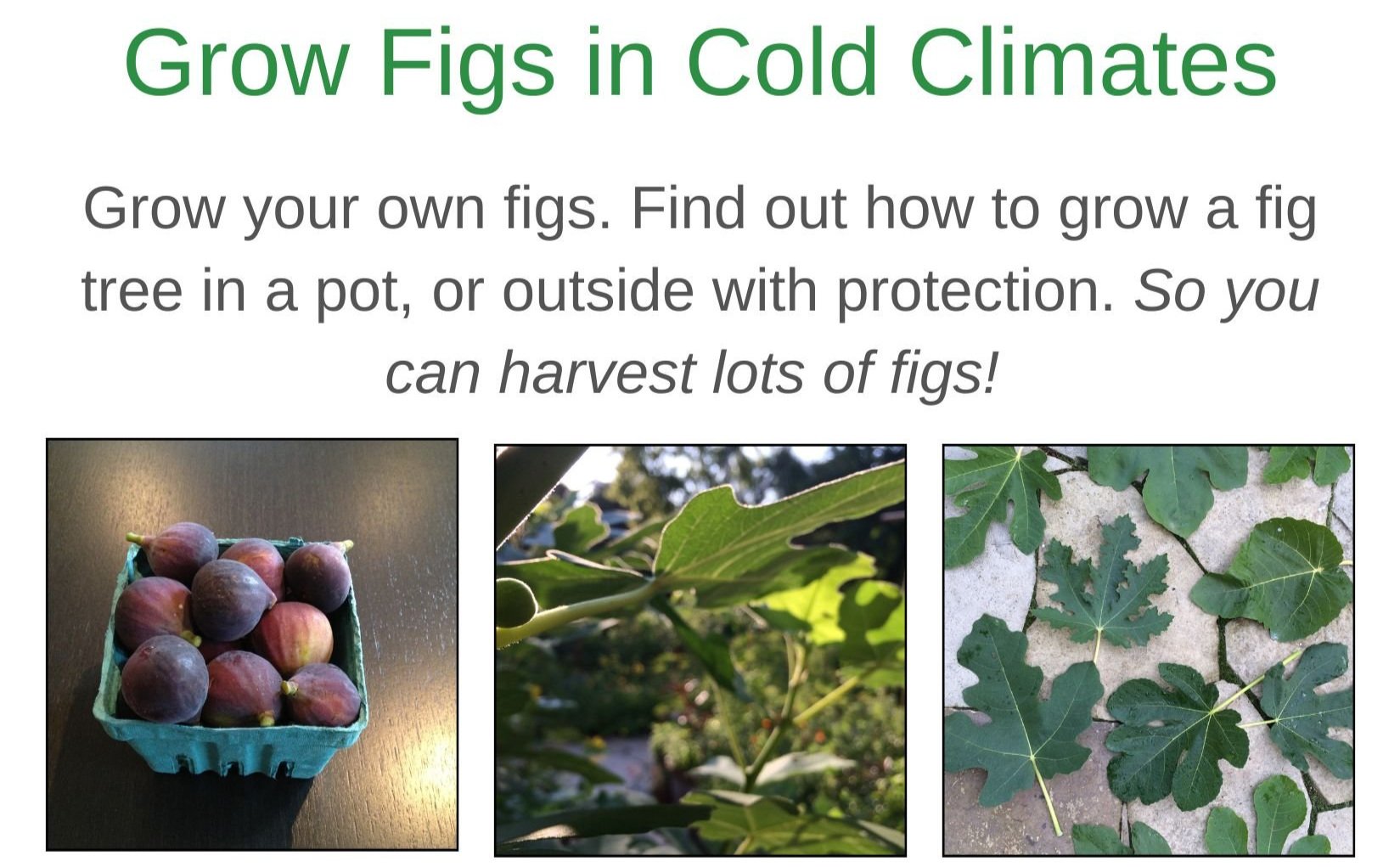By Steven Biggs
Diminutive Fig Low Cordons for Easier Overwintering
Fig low-cordon espalier, an easier way to grow an in-ground fig tree in a cold climate.
Francesco had a fig tree in his Toronto yard. And every year, in what became a community event, he and some neighbours wrapped it up in burlap and tarps, then wrestled it down to a horizontal position, into a trough they’d dug for it. Then they covered it up for the winter. Each spring, they’d reverse the process.
When the tree got too tall to be tipped, they built a temporary enclosure around it, and put a space heater inside. It’s a fun story, and you can hear about it here.
It’s also heavy work. (I tip some of my fig trees, but I keep them much smaller than Francesco’s…so I don’t need to invite over the neighbourhood! See how I tip my fig trees.)
If tipping trees isn’t your cup of tea, there’s an easier way to grow an in-ground fig tree in a cold climate.
In this post I’ll tell you about growing a low-to-the-ground fig espalier that’s pruned right back in the fall.
No tipping. No wrapping. No lugging potted figs to a protected spot. Just cover the ground-level stem.
Keep reading and I’ll explain how to make yourself a simple-to-cover fig low-cordon espalier.
What is Espalier?
Espaliered pear trees at Mount Vernon.
Espalier is when we prune a tree so that it’s flat: It’s a two-dimensional tree.
In borderline fruit-growing areas such as northern Europe, there’s a long history of growing espaliered fruit trees against stone and brick walls. The walls warm up in the sun, and the flat fruit tree is nestled up against the warmed walls. The extra little bit of heat protects flowers from frost damage and speeds up ripening.
Along with extra heat, espalier is also a great technique to fit fruit trees into small spaces. I grow espaliered apples along a fence where there’s not enough space for a wider tree.
While espalier can be practical, it’s also be an art form. At Mount Vernon, George Washington’s estate (open to the public and well worth a visit) there are espaliered pear trees that frame the plots in the kitchen garden.
A Belgian fence is like a living wall!
Another beautiful espalier is the Belgian fence. A Belgian fence is like a living wall, with trees pruned to grow in a lattice-like pattern. (There’s are nice examples at Royal Botanical Gardens in Hamilton, Ontario, made from crab apple and serviceberry.)
There are many other espalier forms worth investigating if you like making the garden an artistic creation as well as a food-bearing one. Here are three of them:
Candelabra: U-shaped main stems that reach out horizontally, before bending upwards
Fans: As the name says, fan shaped
Step-over: A very low, horizontal main stem (called a “cordon”) that is close to the ground. (There’s a famed step-over apple tree in Monet’s garden…I’ve never seen it, but have seen pictures of it.)
Today, we’re taking our inspiration from Monet’s step-over apple tree. We’re using the step-over form—low cordons—to make overwintering fig trees in cold climates easier. I wonder what Francesco would think!
What’s a Fig Tree Espalier?
Before we unpack the idea of the fig low cordon, let’s quickly look at other forms of fig espalier.
It’s rare to find large fig trees for sale here in Toronto. Rarer still are unusual varieties. I never see fig espaliers.
Espaliered fig tree in a pot. This one was rather dear…so I made my own instead!
Except once I did.
One day I came across a fig espalier at a nearby garden centre. As soon as I saw it, I pictured this potted fig espalier on my driveway, flat against my house. It was a bit of a tangled mess—but nothing a good pruning couldn’t fix.
Then I flipped over the tag to see the price. Gulp. $500.
So that fig espalier never made it home to my driveway.
Instead, I went home and looked through my potted figs to see if I had any with branching suited to creating an espalier. I did, and you can see the beginnings of my work in the picture below.
In a climate such as mine in Toronto, potted fig espaliers like this have a couple of benefits:
They look nice (imagine a patio surrounded by a living wall of figs)
Placed against a warm, south-facing wall, there is lots of heat to ripen the figs faster
Pruning fig trees to make an espalier is something a home gardener can tackle. Here’s a fig espalier in the making.
But I think the form of espalier that has the most to offer cold-climate growers in areas such as my Canadian Plant Hardiness Zone 6 (USDA Zone 5) garden is the fig low cordon, a.k.a. the step-over fig.
The Fig Low Cordon Espalier
Like the other espalier forms, with a fig cordon we’re making a “flat” tree. But the main stem is horizontal—and it’s just above the ground level.
Think of those pear trees from George Washington’s garden. Now, imagine them hugging ground level.
Benefits of a Low Fig Tree Over Cold Winters
This step-over form makes overwintering of in-ground figs trees very easy. There’s no wrapping. No space heaters. No tipping.
It’s easy to prune. Before winter, all new growth is removed. It’s that straightforward.
That seemingly harsh pruning means that all that has to be protected for the winter is the horizontal cordon—and it’s so close to the ground that it’s a cinch. (We’ll talk about protection below.)
There’s something else we should touch on too: Why this drastic pruning method works with figs. It works because figs can form on new wood. (With many fruit trees, it’s the older wood that bears flowers and fruit.)
Note: this method won’t grow you any breba figs…none! Breba figs form on wood from the previous year—while main-crop figs grow on new wood. With the low-cordon espalier fig, all the fruiting wood each year is new wood, meaning all the figs are main-crop figs.
Where to Grow a Fig Low-Cordon Espalier
Location is very important. The first time I tried fig cordons, I planted them in a low-lying part of my property where the soil was slow to heat up in the spring. The fig trees survived, no problem. But because they were slow to wake up in the cooler location, the season wasn’t long enough for figs to ripen.
Here's what I recommend:
Full sun
South-facing, so the soil heats up
Even better if it’s beside a wall for extra heat capture
How to Make a Low Fig Cordon Espalier
Fig low cordon that I made by lopping the top off of a mature fig trees, and them planting them so the trunk was almost horizontal, right above ground level.
The first time I made fig cordons I cheated. Instead of developing new branches, and training them horizontally, I took fig trees with long, straight trunks and planted them so that the trunks were almost horizontal. So if you want an instant step-over, low-cordon fig, that’s what I did.
But here’s a more traditional approach, starting with a small fig tree.
Year 1: In the first year, you create the cordons
Year 2: Then, the following year, you allow upright growth (and figs!) to form
Year 1, Scenario 1
Fig tree has a few branches coming from the base
The goal in year 1 is to create the cordon, the low, horizontal branch that’s just above ground level. This is an example of a cordon.
If you have more than one branch, keep the two tallest branches (so you can have cordons going out in both directions from the base)
I grow branches at 45 degrees for the first year because they grow more quickly than if they’re horizontal. Tie them to bamboo stakes that are on 45° angle
At the end of the first year, gently bend over the 2 branches so that they’re horizontal
You will probably need to pin down the “cordon” at first (I use a wire hoop, see Hints and Tips below)
The bamboo on the cordon is temporary, remove it after a year, once the cordon has thickened and stays in place
Year 1, Scenario 2
Fig tree has only one branch
Pinning down the cordon after bending it to a horizontal position, using metal wire hoops.
If your fig tree has only one stem, decide if you want a cordon on just one side—or if you want cordons on each side
If you want a cordon on only one side, train the single stem as above
If you want 2 cordons, nip off the top of the stem at the height where you want cordons (this causes new shoots to grow)
Keep two new shoots for cordons—and treat as above
Year 2
In year two, with the horizontal cordons in place, upright shoots to grow.
Pruning an Established Low-Cordon Fig Espalier
Spring Pruning
Fig cordons at Fruit Trees and More. Not the spacing and bamboo stakes. (These figs are in a moderate climate where winter protection is not needed—but this is a good method to grow figs in a small space and make them easy to harvest.
The fig tree might try to make more shoots than you need. Prune so they’re spaced 15-20 cm (6-8”) apart.
To grow them straight upwards, tie them to bamboo poles.
Fall Pruning
As the fig trees go dormant in the fall, cut back the vertical branches to within an inch of the cordon.
Leave a nub of branch, about 2 cm (1”). It’s from this that new branches arise in the spring.
If the ends of the cordons grew out over the summer, now is the time to shorten them back to your permanent framework.
Protecting a Fig Low-Cordon Espalier for the Winter
With the vertical branches removed, you’re left with only the cordon. And it’s just above the ground.
All you need to do is insulate it. Because it’s low to the ground and insulated, winter temperatures are moderated and stable.
The colder your winters, the more insulation you’ll need.
Here in Toronto, it’s enough for me to insulate with straw.
(I use straw for straw-bale gardening. Find out how to make a straw-bale garden.) If you don’t have straw, here are other ideas:
Bags of potting soil
Garbage bags filled with leaves (preferable to raking leaves over top because wet, matted leaves don’t insulate as well as dry leaves with air.)
Espalier Fig Spacing
You have a lot of leeway when choosing the spacing for your fig cordons. If you want longer cordons, obviously you’ll need fewer fig trees. If, like me, you have lots of fig varieties to fit into a small garden, you might opt for shorter cordons and more fig trees!
The tip of a cordon can reach it’s neighbour. No need to leave much of a gap in between.
Variations
Fig Trench
I also grow fig cordons in a trench. The idea of a trench is that it stays a bit warmer over the winter. In late fall, I cover the top of the trench with windows and bags of leaves. In spring, once I remove the bags of leaves, sun shines through the windows into the trench to warm things up.
The colder your zone, the more appealing a trench might make.
(There’s a rich history of trench cultivation! Here’s a fun article if you like this idea.)
Fig Trees in an X-Shape
Don’t be constrained by the 2-dimensional nature of espalier. You could make a low-to-the-ground fig growing out in an X pattern.
Early spring start
In cold climates, summer heat and season length are limiting factors to ripening fruit. If fig plants wake up in good time, the season is longer. Then there’s more chance of ripe figs.
Warm soil helps to wake up the fig tree. A south-facing location warms up more quickly than a location with less sun. If the location is next to a wall or something that catches the heat from the sun, the soil warms more quickly.
I have a low stone wall next to my cordon fig trees to capture heat. In the spring, I angle old windows against the wall, making a temporary low-tech mini greenhouse. The windows hold in heat to help the fig trees wake up earlier. They also protect them from late spring frosts.
Varieties for Fig Espalier
Choosing the right fig variety is important for success with fig cordons in cold climates.
Here’s what we’re looking for a fig variety suited to low-cordon espalier:
A consistently heavy main crop
An early-ripening main crop
Tolerance of harsh pruning (my ‘Ronde de Bordeaux’ was not pleased about it)
I’m still experimenting with this, but my best results have been with the variety Natalina. Tune in to my chat with Jonathan Bates, below, to hear what he does with cordon figs. He has good results with the varieties ‘Florea’ and ‘St. Rita.’
(If you’re using this method and have a variety that does well, e-mail me—I’d love to hear about it.)
Hints and Tips
While you’re first forming the horizontal cordons, tie them to horizontal stakes so that they’re straight. I use bamboo stakes and sisal twine, which decomposes within a year.
If fig trees are growing quickly, the tie might constrict the branch—so check a couple of times over the summer to make sure the branch hasn’t outgrown the tie.
To pin down the cordon until it’s thickened and stays in place, use metal hoops. I make them from 14-gauge galvanized wire, the same wire that I used to create a framework for my espalier apples. Pieces of metal coat hanger work nicely too.
FAQ Fig Tree Espalier
Pin this post!
I accidentally broke a branch I was trying to bend. What should I do?
All art is recovery from the first stroke. And with pruning, we recover by encouraging and training new growth to do what we want. Be patient, and the fig will send out a replacement shoot that you can train to go where you want it to.
(one year the squirrels chewed off ALL the branches on my new apple espalier. I was furious! But the tree sent out new branches, and now you wouldn’t even know!)
Can I prune my fig tree even more, right back to the roots, so it's even more easy to cover for the winter?
That would sure make overwintering easy. That harsh a pruning is too much of a setback for a cold-climate fig tree. There probably won’t be enough time in a short season for new branches to ripen figs. (There will be new growth, and it will have figs…but they probably won’t ripen in a cold climate.) Retaining that horizontal fig cordon through winter means the pruning isn’t so much of a setback—and the new growth it sends out will produce figs that ripen.
Hear a Chat with a Greenhouse Grow who has Fig Cordons
Tune in to this chat with Jonathan Bates at Food Forest Farm in New York State. To grow figs in his cold growing zone, near the finger lakes, Bates grows horizontal cordons low to the ground, within a greenhouse.
Find This Helpful?
If we’ve helped in your food-gardening journey, we’re always glad of support. You can high-five us below! Any amount welcome!
This is the Biggs-on-Figs segment from the Food Garden Life Radio Show that broadcast in February 2021.
More on How to Grow Figs
More Fig Articles
Head back to the fig home page to search for fig articles by topic.
Fig Books
Fig Course
Fig Masterclass
The self-paced online fig masterclass gives you everything you need to know to grow and harvest your own figs in a cold climate!
(We also run it live once a year. If you’re interested in knowing when we next run the live online fig “camp” I’ll announce it in my newsletter. Hop on the newsletter list here.)

